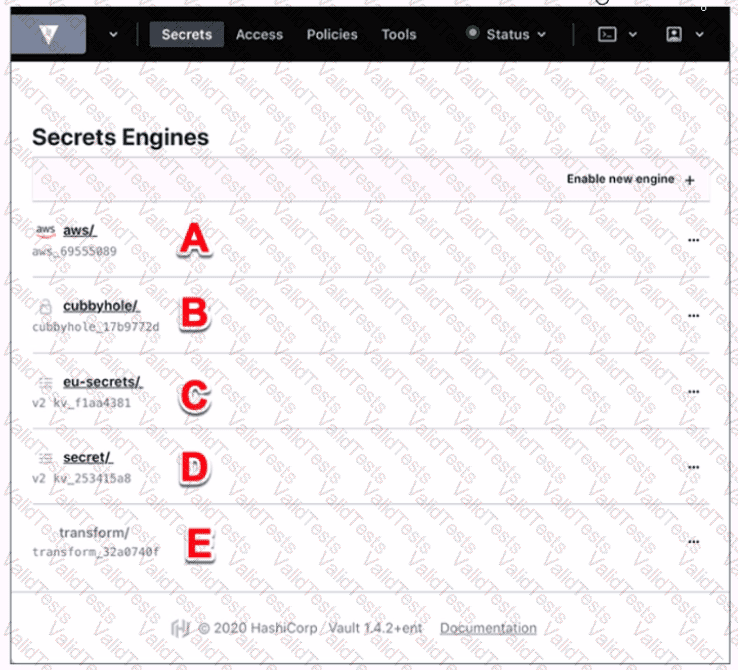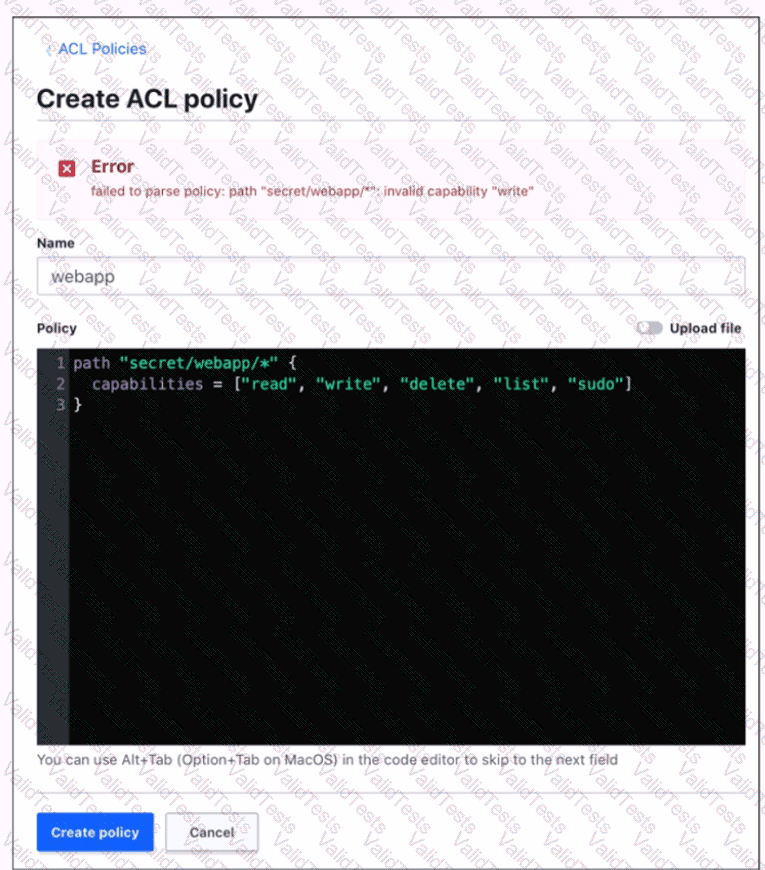What is a benefit of response wrapping?
Which of these is not a benefit of dynamic secrets?
A web application uses Vault's transit secrets engine to encrypt data in-transit. If an attacker intercepts the data in transit which of the following statements are true? Choose two correct answers.
Use this screenshot to answer the question below:

Where on this page would you click to view a secret located at secret/my-secret?
To make an authenticated request via the Vault HTTP API, which header would you use?
When creating a policy, an error was thrown:

Which statement describes the fix for this issue?
What can be used to limit the scope of a credential breach?
Examine the command below.Output has been trimmed.

Which of the following statements describe the command and its output?
The Vault encryption key is stored in Vault's backend storage.
How many Shamir's key shares are required to unseal a Vault instance?